 If you’ve been active on social media in recent weeks, you may have had an experience that went something like this: You came across a video of an influencer talking about a product, giving it a bad review, and telling their followers to avoid it. Nothing too abnormal, right? Except, you kept scrolling, and more and more videos popped up showing creators listing numerous brands or purchases and straight up telling their fans and followers, “Do not buy this!”
If you’ve been active on social media in recent weeks, you may have had an experience that went something like this: You came across a video of an influencer talking about a product, giving it a bad review, and telling their followers to avoid it. Nothing too abnormal, right? Except, you kept scrolling, and more and more videos popped up showing creators listing numerous brands or purchases and straight up telling their fans and followers, “Do not buy this!”
But wait, these people are influencers, right? Aren’t they supposed to be doing the opposite? As it turns out, influencing has taken a new turn: enter #deinfluencing.
What exactly is deinfluencing?
Like many other trending topics, #deinfluencing came about as a hashtag on TikTok and basically refers to the practice of shutting down or pushing back against trending items or products, usually of an expensive nature, that are typically promoted by traditional influencers. Think of it as ‘reverse influencing’ in a sense; a way to help people save money in their pockets rather than spending it.
To some this might not sound like anything groundbreaking, but small this trend is not – on TikTok alone, searching up the #deinfluencing tag will give you results of over 150 million videos and counting, so it’s clear that social media users are eating up this kind of content.
Why has deinfluencing become so popular?
The success of the deinfluencing trend can’t be attributed to one single thing, but rather to a mixture of factors at play in the current influencer marketing landscape.
First things first, we can’t deny the effects that the post-pandemic era and economic instability have brought on consumers. Disposable income is a concern for many amidst rapidly rising prices in key markets such as the United States, so the push towards a less-consumeristic, thoughtful purchasing approach is far more likely to be welcomed than one that promotes reckless or high expenditure.
We also can’t ignore the degree to which FOMO influences purchasing decisions, particularly amongst young folk who just so happen to be the largest audience on TikTok. FOMO, or the Fear Of Missing Out, refers to the anxiety an individual may feel over choosing not to partake in a particular event or purchase. Unfortunately, many of the products that influencers push on their platforms are expensive – from the Dyson Supersonic to the Airwrap, and Drunk Elephant to Tatcha, premium products promoted by influencers act as status symbols but are also largely out of reach to the average consumer. A trend that tells social media users that such products are actually overrated and actively discourages the purchase thereof may help them feel justified in their decision, whether intentional or not, to not purchase the product, and this effect of making them feel good will encourage them to engage with videos of this nature even further.
Another aspect that has contributed to the success of deinfluencing is the relatability of creators. Audiences can form better relationships with influencers that are more similar to them, and thus likely increases their engagement with posts – after all, it’s far easier to relate to a person telling you they regret a pricy skincare purchase rather than someone who is paid to try to convince you to buy into expensive weight loss tea or hair vitamins.
Will deinfluencing negatively affect influencer marketing?
Well, not exactly – ultimately, #deinfluencing is just a trendy buzzword that refers to a different way to influence consumer behavior.
While at face value deinfluencing may seem like it discourages purchasing entirely, what it often results in is the encouragement of an alternative purchase instead. So yes, a creator might be telling you to hold off on spending $100 on face cream, but they’ll often drop in an alternative, cheaper recommendation for something off Amazon that still encourages you to make a purchase at the end of the day.
Additionally, in line with audiences responding favorably to creators being ‘brave’ or ‘transparent’ enough to speak candidly about when popular products are indeed not very good, influencers might tailor their content to capitalize on this and build trust and a loyal following. After all, if an influencer is lauded for their ability to shut down false hype around an expensive product, it might set up the perfect scenario for them to be trusted in the future when they do make product recommendations.
The combination of the previous two points sets up a perfect opportunity for smaller, more affordable brands to work with influencers who are known for their deinfluencing or honest content. Working with trustworthy influencers with high engagement is of high priority to most brands; they know that in today’s age, influencer recommendations are key for brand awareness and landing sales with their target audience. If cheaper brands work with these niche creators, they could be positioned as the legit alternative to the deinfluenced product in question.
At the end of the day, deinfluencing may not necessarily spell a negative turn for influencer marketing, but simply a change in the way it can be used by brands and creators.
Is deinfluencing here to stay?
This question is harder to answer, but first, it’s important to take into account where deinfluencing is seeing popularity. While you’ll come across plenty of content related to the topic on TikTok and even a handful on YouTube, if you head onto Instagram, you’ll notice that fewer than 1000 posts have been made that feature the #deinfluencing tag. As Instagram is still the primary home for influencer marketing in general, it doesn’t seem (at least not yet) that this trend will have any bearing on influencer marketing on the platform.
Whether or not deinfluencing will signal an overall change in consumer behavior would need to be observed over time. TikTok trends come and go constantly as they are replaced by newer topics – since this seems to be highly localized to the platform, it's likely that this one will simmer down in popularity over the next few months.














